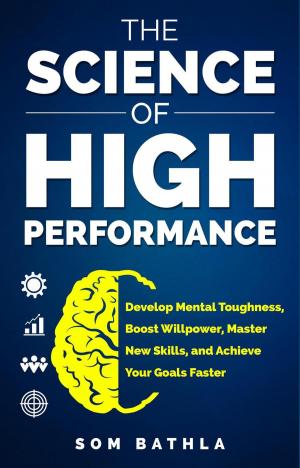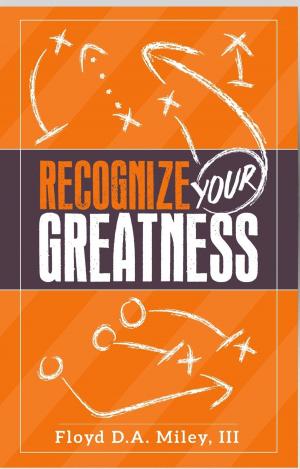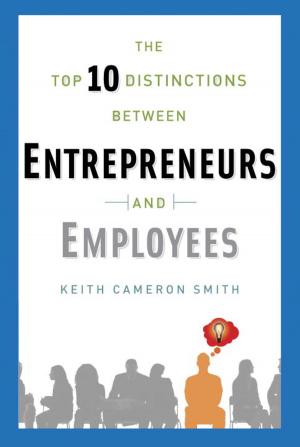The Indubitable Leadership Principles
The Most Practical Approach in Leading Today's FOUR Generation Workforce
Business & Finance, Management & Leadership, Leadership, Nonfiction, Health & Well Being, Self Help, Self Improvement, Success| Author: | Dr Gilbert Ng | ISBN: | 9789670730325 |
| Publisher: | The Inspiration Hub | Publication: | May 9, 2018 |
| Imprint: | The Inspiration Hub | Language: | English |
| Author: | Dr Gilbert Ng |
| ISBN: | 9789670730325 |
| Publisher: | The Inspiration Hub |
| Publication: | May 9, 2018 |
| Imprint: | The Inspiration Hub |
| Language: | English |
In this 21st century era, businesses are fast-growing and dynamic. A great leader is not about being strategic with his business acumen; he is also expected to lead and influence his team to work towards the direction of the organisation. Thus, a great leader without efficient and effective employees will not be able to progress.
However, today's leaders are facing more challenges in leading and retaining talents in their organisation. The reason is simply because we have four generations emerging in the workplace and each generation has its unique working pattern and expectation.
The top-down management of the past seems to be no longer popular and effective; and in order to retain talent and achieve employees' satisfaction, one needs to understand this dynamic workforce imminently.
In this book, the author wants to research on how a leader can be influential and effective to lead these four-generation workforce. I also strongly believe there must be some indubitable leadership principles that can be practised in today's world.
The author has travelled to seven countries, viz. Malaysia, Taiwan, China, Thailand, Cambodia, Indonesia and Vietnam since 2008 to train and coach thousands of managers, senior managers, directors, Vice Presidents and CEOs of various industries.
He has observed certain principles that are similarly being practised by these management teams in different countries for different generations that proved to be effective.
As such, before he embarks into the research of these indubitable leadership principles, he would like to provide a better understanding on these four generations' working patterns. At the same time, he would like to observe some of the different leading styles that could be applied on different age groups effectively.
We cannot deny that leading employees of different age groups is a very daunting task for managers nowadays. Every leader needs to know how to handle different age groups that are made up of different behaviours and communication styles in this dynamic work force.
Nevertheless, he hopes this book will help today's leaders to find the best practices to enable their leadership journey to be more efficient and effective.
In this 21st century era, businesses are fast-growing and dynamic. A great leader is not about being strategic with his business acumen; he is also expected to lead and influence his team to work towards the direction of the organisation. Thus, a great leader without efficient and effective employees will not be able to progress.
However, today's leaders are facing more challenges in leading and retaining talents in their organisation. The reason is simply because we have four generations emerging in the workplace and each generation has its unique working pattern and expectation.
The top-down management of the past seems to be no longer popular and effective; and in order to retain talent and achieve employees' satisfaction, one needs to understand this dynamic workforce imminently.
In this book, the author wants to research on how a leader can be influential and effective to lead these four-generation workforce. I also strongly believe there must be some indubitable leadership principles that can be practised in today's world.
The author has travelled to seven countries, viz. Malaysia, Taiwan, China, Thailand, Cambodia, Indonesia and Vietnam since 2008 to train and coach thousands of managers, senior managers, directors, Vice Presidents and CEOs of various industries.
He has observed certain principles that are similarly being practised by these management teams in different countries for different generations that proved to be effective.
As such, before he embarks into the research of these indubitable leadership principles, he would like to provide a better understanding on these four generations' working patterns. At the same time, he would like to observe some of the different leading styles that could be applied on different age groups effectively.
We cannot deny that leading employees of different age groups is a very daunting task for managers nowadays. Every leader needs to know how to handle different age groups that are made up of different behaviours and communication styles in this dynamic work force.
Nevertheless, he hopes this book will help today's leaders to find the best practices to enable their leadership journey to be more efficient and effective.















